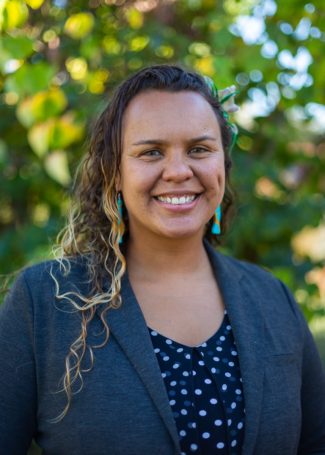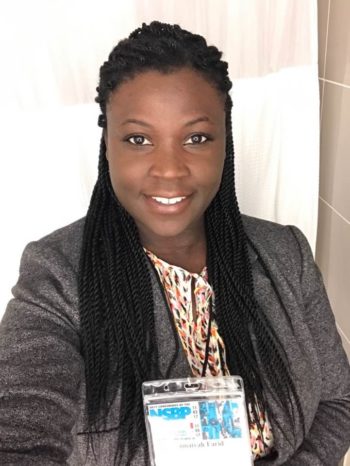Vanderbilt University will play a leading role in advancing underrepresented minority astrophysics scholars to secure faculty appointments through elite postdoctoral fellowships, thanks to a $900,000 grant from the Heising-Simons Foundation.

Brittany Kamai and Samaiyah Farid are the first graduates of the model Fisk-Vanderbilt Master's to Ph.D. Bridge Program to be awarded postdoctoral research fellowships through the newly created Astrophysics Future Faculty Launch Program. Kamai will be hosted by the University of California at Santa Cruz, and Farid will be hosted by Yale University.
The initiative, established through support from Heising-Simons, helps promising graduates of the Fisk-Vanderbilt Bridge Program and bridge programs at Columbia and Ohio State universities to pursue postdoctoral research at three host institutions: Yale University, University of Texas at Austin and University of California, Santa Cruz. All three are top-ranked astrophysics programs that have also demonstrated a strong commitment to diversity and inclusion.

The purpose of the initiative is to build on the singularly positive impact that these bridge programs have had in increasing the number of underrepresented minorities earning doctorates in the physical sciences, helping them take a critical step toward a career in higher education.
"These new postdoctoral fellowships in astrophysics will advance research, discovery and what I like to call achievability by enabling talented scholars to achieve their academic career goals, regardless of their ethnicity, race or background," said Interim Chancellor and Provost Susan R. Wente. "I'm delighted that this initiative will work in cooperation with the Fisk-Vanderbilt Bridge Program, as well as bridge programs at our peer institutions. This will create a clear pathway for graduates-who are underrepresented minorities-to become academic leaders in STEM fields."
"With our novel application process modeled on Vanderbilt's Academic Pathways Postdoctoral Fellowship program, we set up a series of meetings and conversations between a prospective postdoc and a faculty member at one of the host institutions to assess the likelihood that they can work together in a mutually beneficial way," said Keivan G. Stassun, Stevenson Professor of Physics and Astronomy and primary investigator for the grant. Stassun also serves as director of the Frist Center for Autism and Innovation and founding director of the Fisk-Vanderbilt Bridge Program. "We hope that this pilot program becomes the next 'chapter' for underrepresented minorities who are striving to become leaders in STEM fields and might otherwise not gain access to the best opportunities."
Stassun noted that this procedure differs sharply from the traditional postdoctoral application in which new doctoral graduates are asked to provide a fully formed research plan for the next three years.
"What is striking about this postdoctoral fellowship program is the powerful commitment of the host universities to mentoring underrepresented minorities in astrophysics," said Stassun. "After we identify a qualified bridge program graduate for the program, we work with the host institutions to determine a potential faculty mentor whose research interest is compatible, and the host institution commits funding to match the Heising-Simons investment so that the postdocs can enjoy a full three-year fellowship."
"This will create a clear pathway for graduates-who are underrepresented minorities-to become academic leaders in STEM fields." -Susan R. Wente
The most recent assessment of faculty diversity in astrophysics across the nation counted only 13 out of a total of 504 faculty members who are U.S. citizens or permanent residents and who identify as these underrepresented minorities: African American, Hispanic or Native American. That Stassun is one of those 13 makes the mission of the new program, and the vision of a diverse faculty generally, all the more personal for him.
The Fisk-Vanderbilt Bridge Program, directed at Vanderbilt by Kelly Holley-Bockelmann, Stevenson Professor of Physics & Astronomy, is a nationally recognized leader in developing top talent among underrepresented groups in STEM.
"What struck me is how much these prestigious host institutions are vying for the opportunity to host the bridge scholars," said Holley-Bockelmann. "The application process is being turned on its head, with the host schools writing tailored, thoughtful assessments of how they can best advance a candidate's own career goals. That just underlines how much the fellows are valued in their contributions to the host schools."
The program, which started more than 14 years ago and served as the model for the Columbia and Ohio State bridge programs, provides numerous support services and resources for underrepresented minorities as they consider a career in academic research or the STEM workforce.
Students in the Fisk-Vanderbilt program spend the first two years at Fisk University, working toward a master's degree, with access to resources at both institutions. A signature feature of the program is the opportunity for students to form meaningful mentoring relationships with one another and with faculty, staff and postdocs as they build toward their goal of earning a doctorate.
The two astrophysics graduates of the Fisk-Vanderbilt Bridge Program are the first to be selected for the new postdoctoral initiative intended for underrepresented minorities. Farid has become one of only a small number of African American women in the field of solar physics, and Kamai is the second Native Hawaiian to earn a doctorate in astrophysics; her research focuses on designing instruments for the blossoming field of gravitational wave astrophysics. Stassun said two more fellows will be identified who will start in 2021, with a total of four for the pilot program.
The program is limited to astrophysics for the initial start-up, but Stassun hopes it can expand to other physical sciences in the future.






